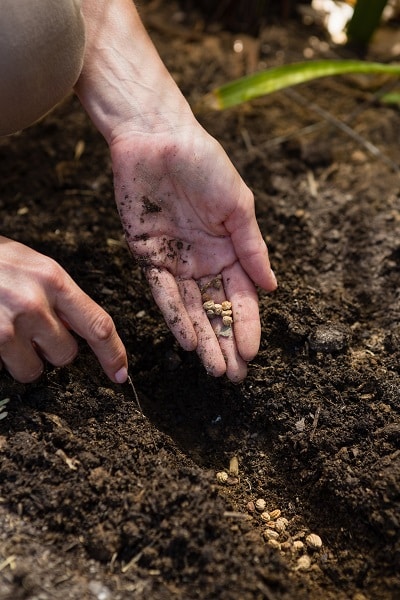In the middle of spring, it is the perfect time to start gardening. Whether you are a beginner or an expert, gardening is a pleasant way to spend more time outdoors. Gardening is both fun and challenging. It’s a complex way since many plants require carefully balanced conditions to grow. These gardening tips and tricks are essential and fundamental and will help you get the best results:
For Garden:

Location:
Gardening is all about location. Some plants are shade plants, some need sun, yet plants are partial shade or sun. For that, you don’t have to study anything; place the container on wheels or a trolley, so you can move it around on the selected spot that doesn’t get sunlight.
Preventing Dirt From Collecting Under Your Nails:
There’s a tip to prevent dirt from storing under your fingernails while you work in the garden. Rub your fingernails across a soap bar to seal the undersides of your nails, and then dirt can’t collect beneath them. Then, use a nailbrush to remove the soap after you’ve finished in the garden, and your nails will be clean.
Source Your Seeds:
Starting your garden from seeds is an excellent way to observe the growth process. Be sure you’re choosing the best sources of seeds by getting information on where they’re coming from and checking seed packets to complete reading of their contents.
Label:
For beginners, it can be easy to forget what and where you’ve planted. Then for that, write or paint a plant label and put it in the ground next to the bulbs, seeds, or plants you’ve grown.
Acidify The Soil For Acid-Loving Plants:
You can use leftover coffee and tea spots to acidify the soil of acid-loving plants such as rhododendrons, azaleas, gardenias, blueberries, and even camellias. Several sprinkling of about one-fourth of an inch applied once a month will keep the soil’s pH on the acidic side.
Keep Garden Tools Handy:
Store a spare set of garden tools and twine in a container in your garden. That way, when you see weeds, a stem that needs tying up, or broken rose canes, you won’t have to look for them in the storage, run to the garage or shed for supplies.
Garden Beds:
Raised beds make it simpler for you to work in your garden and are attractive. Gardening in beds and blocks is more convenient than in single rows. Garden Beds should be 3 to 4 feet across and narrow for you to cross. And should be about 8 to 10 feet long, so you can quickly move around without stepping on them.
Give Them Space:
The transplants and seeds are small but can get bigger while growing. So if the area is crowded, it makes it difficult for the plants to grow. Start small and give each plant its own space to grow. If some crops are too close to each other, they can spread disease and prevent growth unless they’re companion crops.
If You Have A Little Space, Go For Container Gardening:
Any vegetable, flower, herb, or shrub can grow successfully in a container. Small plants are best for small containers.
Plan out and select plants that suit the amount of sun, shade, or climate the container will receive.
Some plants like chives, basil, thyme, and other herbs are quite perfect growing in pots.
Remember, drainage holes are essential in the container. The soil might become waterlogged without proper drainage, and the plants may die. Water the container plants more often because the soil dries out quicker in pots.
Use Compost:
You can add organic compost material to your garden to help your plants grow, like tea bags, eggshells, coffee grounds, etc. Adding these things to your soil allows it to retain moisture, stimulate good bacterial growth, fight pests and disease, etc.
Use Fertilizer:
Never skip enhancing the soil. Fertilizing the ground is a crucial step to add nutrients and minerals.
Companion Planting:
You can grow different crops in the same vicinity in the companion planting. It has many benefits like warding off pests, maximizing the use of space, and providing nutrients. Some plant species flourish when planted close to each other, while other crops can need space. Like, tomatoes produce higher yields, and they coexist with basil. Other partners include carrots, asparagus, onions, celery, marigold, lettuce, parsley, and spinach. Also, keep tomatoes away from beets, cabbage, corn, dill, fennel, rosemary, and potatoes.
Grab Essential Gardening Tools:

Some basic and essential gardening tools are required for gardening. You will require:
- Essential Ones: A pair of pruning scissors. Every gardener should own this tool. These are used to cut back plants and bushes and cut off these plants’ dead parts.
- For Watering: Garden hose or pipe and a watering can. The Garden hose is perfect for watering large areas and trees. And a watering can is preferred for delicate and small plants.
- For Digging: A spade, a garden fork, and a trowel. The trowel and spade are used to drill the holes, whereas the garden fork is used to break the large clusters of soil or clear the roots of old plants and weeds.
- Weeding: A forked trowel and a gardening knife. These garden tools are preferred to tackle the weed problems and allow you to keep the invading weeds away.
For Saving The Seeds:

- Collect the seeds and rinse them off.
- Place them on a flat surface for ventilation.
- After drying, store them in an envelope and keep them in a cool area with air but no sunlight.
- You can also store seeds in a jar with little silica gel packets.
- If stocked well, they will remain intact for years.
Final Words:
Not everyone’s an expert, but that shouldn’t stop you from doing gardening. Fresh vegetables, fruits, herbs, and flowers make a garden attractive and help you eat healthily.
Use these tips and tricks in your everyday life to grow fresh plants and foods.


